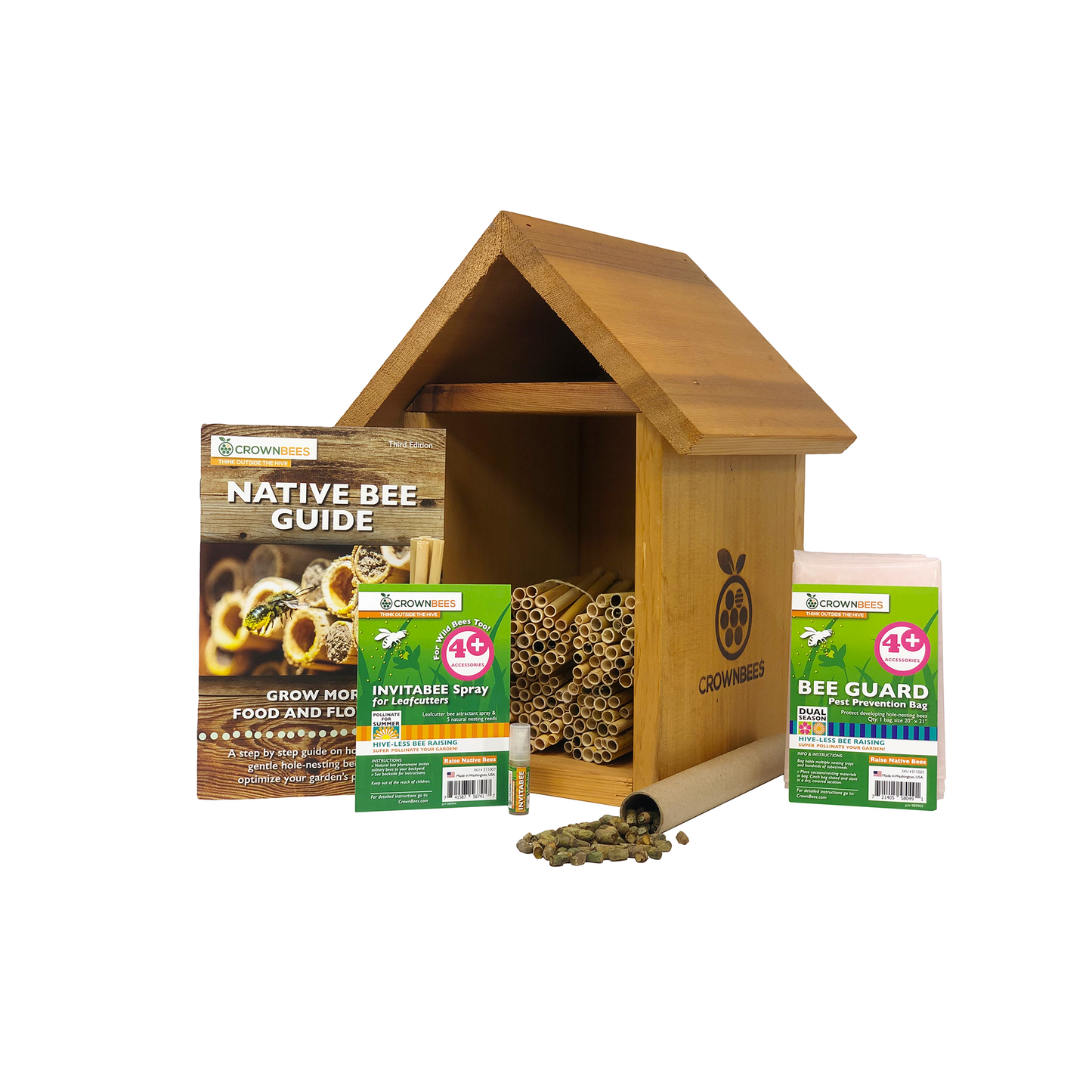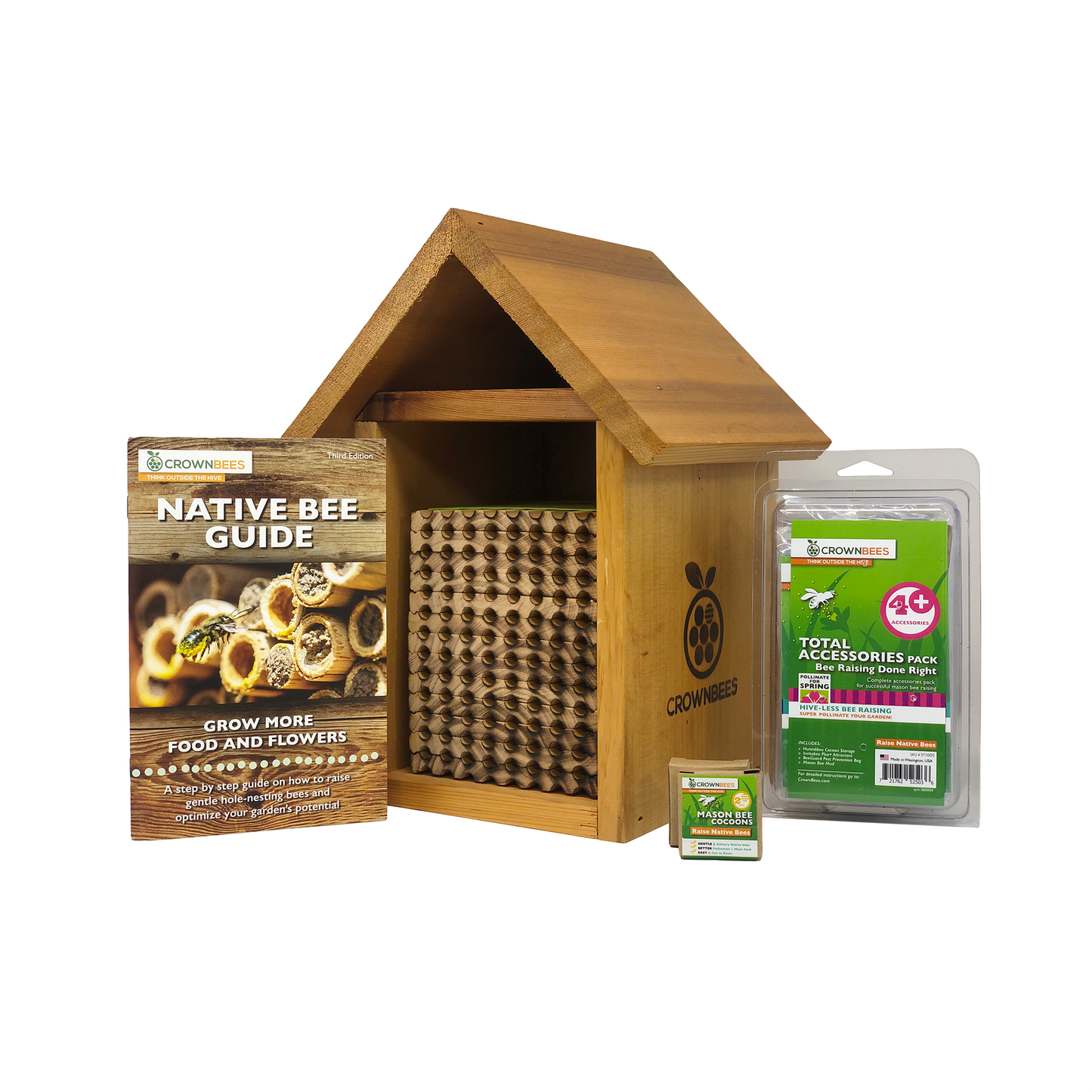
Watch leafcutter bees build their nests, emerge and build new nests for multiple generations. Don't miss the excitement with our Leafcutter Bee Observer.
Installation Instructions
- The Bee Observer is designed to be used in a bee house that has a 2" to 3” roof overhang to protect against rain.
- If female bees are already nesting in your bee house, install the Bee Observer in the evening.
- Place the Bee Observer in your bee house under your nesting materials (BeeTubes, Natural Reeds, Wood Trays) with the open end of nesting holes facing out.
- Leave installed throughout the summer to allow new generations of leafcutter bees to emerge and nest again.
- Bees tend to nest first along the bottom row of nesting cavities.
Observation During Nesting—To lessen disturbance of the nesting bees, observe one to two times a day, preferably in the evening. After observation, gently ensure the wood nesting tray is pushed to the back of the Bee Observer drawer.
Harvest Instructions
- Remove the four screws securing the acrylic lid.
- Remove the bee cocoons with a Cocoon Comb.
- Clean the nesting tray with a dry, stiff brush or old toothbrush.
- Treat visible signs of mold or chalkbrood with a Q-tip moistened with CleanBeeTM.
- Soak acrylic window in water for a few minutes to avoid scratching. Rinse and wipe with a soft cloth if necessary.
- Allow to dry completely.
- Reattach the acrylic window, tightening the screws until just snug. If you overtighten, the cover may break.
- The Bee Observer Drawer was treated with Daly's Ship'n'Shore, a non-toxic waterproofing drying agent with linseed oil.
Note: Spring leafcutter bee cocoon harvest runs between February and April.
See Video
Please note that while the video is for the Mason Bee Observer, the principles are the same.



